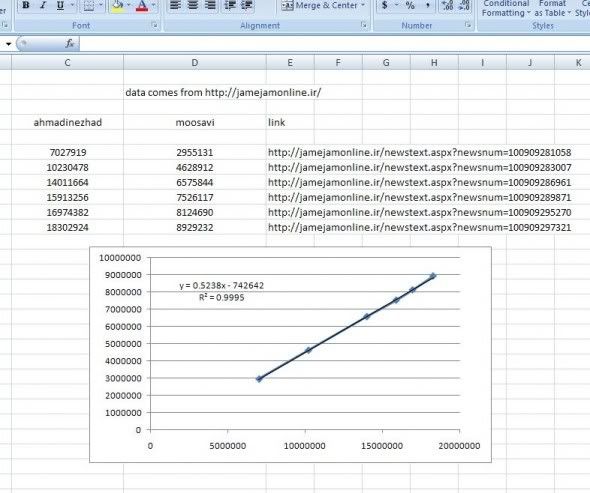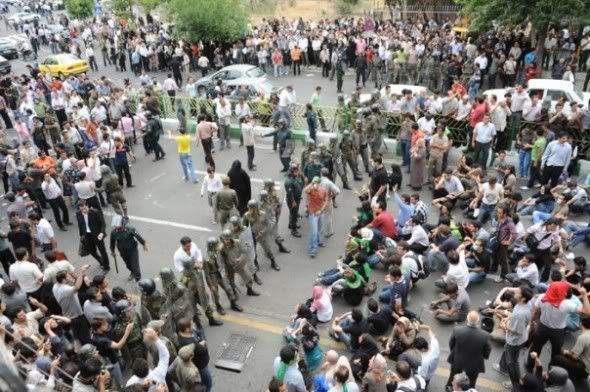Panic in the streets of Tehran
Technorati tags: Iran, Presidential Election, Unrest, Election Fraud
Walski apologizes for the extended absence for the better part of this past week. It’s just that the Oil & Gas Asia 2009 trade show in which the company Walski works for participated was taxing. Both on time and on Walski. 6 – 8 hours on one’s feet, every day for 3 days, will usually do that to you.
In any case, we’re back in blogging mode now. Lots to say, actually, about the week that was. And over the next few days, Walski will try to make up for the lost week. But for now, some late breaking and disturbing news from Iran.
As most of you may know, Iran has just concluded its presidential elections, in which incumbent Mahmoud Ahmedinejad has apparently been re-elected. But there is controversy surrounding this particular poll. Specifically alleged electoral fraud, claimed by opponent Mir-Hossien Mousavi, an independent reformer.
Reports have surfaced that widespread riots have broken out in Tehran and other locations within Iran, many protesting the controversial victory claimed by Ahmedinejad.
And there just might be some truth behind the allegations of electoral fraud.
(possible proof of fraud, and more, in the full post)
Independent Iranian news website Tehranbureau has reported that based on data provided by the Iranian Interior Ministry. When voting results for Ahmadenijad were mapped against votes for Mousavi, an almost perfect linear relationship was discovered.

A little math refresher: the vertical (y) axis denotes votes for Mousavi, while the horizontal (x) axis are votes for incumbent Ahmadenijad. Each point on the mapping denotes particular area polling results. R^2 is the correlation coefficient – which for this particular mapping is 0.9995. The closer the coefficient is to 1, the more perfect the fit.
In the six area poll results mapped, Ahmadenijad “received” almost exactly 2 times as many votes as Mousavi did. Tehranbureau has this to say:
Statistically and mathematically, it is impossible to maintain such perfect linear relations between the votes of any two candidates in any election — and at all stages of vote counting. This is particularly true about Iran, a large country with a variety of ethnic groups who usually vote for a candidate who is ethnically one of their own. For example, in the present elections, Mr. Mousavi is an Azeri and speaks Turkish. The Azeries make up 1/4 of all the eligible voters in Iran and in his trips to Azerbaijan province, where most of the Azeri population lives, Mr. Mousavi had been greeted by huge rallies in support of his campaign. Likewise, Mr. Karroubi, the other reformist candidate, is a Lor. But according to the data released by Iran’s Interior Ministry, in both cases, Mr. Ahmadinejad has far outdone both candidates in their own provinces of birth and among their own ethnic populations.
(source: Tehranbureau)
Mousavi, in the run up to Iran’s 10th post-revolution elections, had received massive support from the people of Iran. This support seems to have all but disappeared once it came to polling.
Aljazeera reports that the Iranian government, fearing the spread of the protests, has shut down several online news sites, and services (namely Facebook), and has also disabled text messaging.
Although Iranian law allows for a period of contesting the poll results, it is unlikely that any investigation into allegations of poll fraud will be investigated, based on what happened in the 2005 elections, when similar claims were made.
Videos showing public unrest have surfaced on Facebook, via the Iran page, which is linked to Tehranbureau. Could this be the beginning of a new Iranian uprising against an oppressive government?
Walski will be following this closely, and will report any new developments whenever possible. In the meantime, you can also read this posting by blogger-buddy __Earth.

















